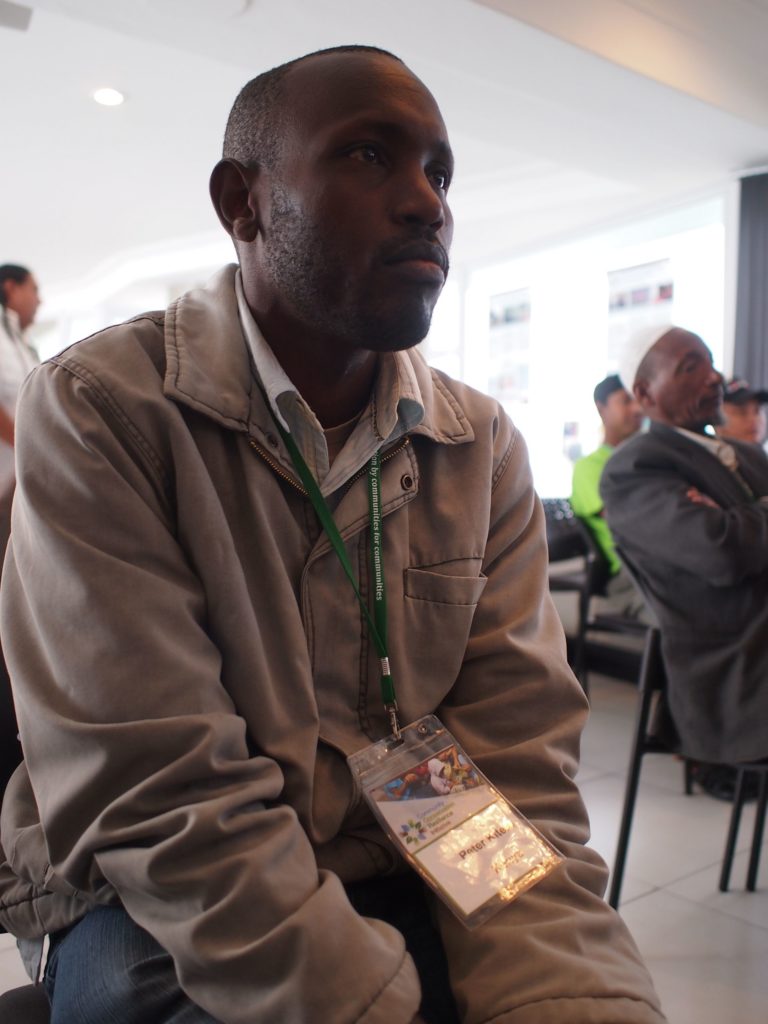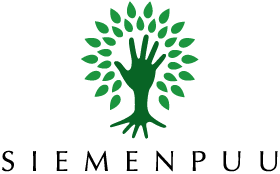Peter Kitelo comes from Kenya. His community lives in Mt. Elgon forest, about 3000 metres from the sea level. The forest is indigenous mountainous forest that transforms into moorland when reaching the top. The community has had to endure evictions from colonial time when some of their lands were converted to “white highlands” and evicted and restricted to the forests which again most of it was made “forest reserves” in the 1930’s and a tiny of it given to the community as a “native reserve”. A National Park was again established in the Mt. Elgon forest in 1968 including in parts of the Native reserves, all this leading to many evictions of Kitelo’s people, the indigenous Ogiek, from their forest. The remeinder of the Community’s land was converted to a “game reserve” in 2010 which the community contested in court, the case is yet to be determined.
The government has already evicted the Ogiek community many times including three times that Kitelo witnessed. Besides the National Park, there are now also two smaller forest reserves, a game reserve and patches of privately owned land, and the government is still trying to evict the ogieks to an agricultural area south of the mountain, out of the way of conservation and recreation.

Part of Kitelo’s family and community has already moved southbound, where the first fields were established in the 1970s. He says that he has three homes: in his community he lives in both of the above-mentioned places. For advocacy work he has an apartment for him and his family in Nairobi, because it’s close to the parliament and constitutional commissions that are addressing land problems including his c omunity’s. He needs to be ready to react to political discourse at any moment, since the changes in legislation might be pushed forward with very short notice.
His community is used to moving up and down along the mountain slopes depending on the season. Their cows and sheep need good quality grazing grounds, which are found in the fresh understory of the forest during dry seasons.
Siemenpuu Foundation is supporting Kitelo’s organization, the Chepkitale Indigenous People Development Project (CIPDP), in their project ‘From conflict to opportunity: rights-based forest conservation in Kenya’. We interviewed Peter Kitelo at the Community Conservation Conference in Durban.
What does the forest mean to you and your community?
That’s a difficult one. We don’t “conserve” the forest. We look at forest as you look at a human being. Like it’s just there. It’s a friend, who doesn’t do anything bad to you. Why should anyone come and take it away from us? If you cut trees the landscape is not beautiful any more. You know the difference when you see it, and you realize that destroying forest is wrong.
We don’t differentiate the different parts of our environment; it’s all part of our ecosystem and life. If everything’s not there, life is not complete.
But plantations – those we don’t look at as forests.
Kenyan forest laws are undergoing a reform. What is their situation at the moment?
I joined the struggle in 2000 after graduating from college. There were others too, but I had the benefit of having an education. One of the former members of the community, a high school teacher, started to work for making an impact in the new constitution that was being re-written at that time. So there was no formal organization, only students – people from the community – who became active in advocacy work. Issues we wanted to address were land tenure and community representation in the government. We got to know other communities with similar problems and started to work together to date. In 2010 the constitution was passed, with some input from the community.
In terms of land issues there are a bunch of important new laws that are still under consideration:
1. Community land bill, which will help communities register their land,
2. Historical injustice bill, about indigenous people’s land converted into protected areas (by land grabbing),
3. Forestry bill, which would recognize community forests for the first time, and
4. Bill to look into representation of marginalized and minority communities.
Currently we’re focusing on parliament engagement. The opportunity to affect these bills is now, and I need to stay alert and keep up with the politicians. The laws are not going to change every five minutes, but the future generations will have to live with this legislation for a long time!
What also motivates me is that there is a lot of support from many – some unexpected – sources, such as Siemenpuu, Forest Peoples Programme and individual specialists who are helping with for example land tenure issues and the working together by the forest communities of Kenya.
What is the relationship between the community and the Chepkitale Indigenous People Development Project (CIPDP)?
CIPDP connects the community together. Originally we needed to formalize our meetings because the police called our communal gatherings illegal. So the CIPDP is actually the same as the community, only giving it a legal ground to organize itself. Some people have also left the community for studies or work, but they help and support the community from outside.
What are your thoughts about the Community Conservation Conference (in relation to your work and cause)?
This was my first time to attend a Global Forest Coalition gathering. It’s good to have many people coming together and sharing their stories. Some people of course will not understand everyone else. But the importance comes from people hearing about other peoples’ struggles.
The big issue, the most important thing for everyone, is land tenure and land rights. I hope they will be fitted into these types of community conservation processes. Another important thing is the new conservation paradigm: that people are not bad, and communities are not bad to forests. This narrative needs to be changed in a big coalition and passed on to international venues and processes. The views in the international level have to change.
It’s very good to hear what other people are saying and what they are facing in their countries. For example discussing with someone who has the same problem with e.g. fire, can give you new ideas for your own work.
It was also very nice to finally meet my contact person from Siemenpuu, Kirsi Chavda, so that you get to know the person you are working with. You’re finally able to explain your work face to face, and the challenges it involves. It’s important to meet the people of Siemenpuu and hear what they are doing back in Finland.
The bottom line is that this meeting has not been a waste of time.
How do you see the future of Mt. Elgon forest?
I believe in the future. The community has a strong self-respect and they are self-sustaining in terms of their livelihoods, so it’s only a matter of land ownership. The people also believe strongly that they have the right to live in the forest and that this is their land as it was their ancestors. It would be wrong to leave from their homeland.
Fortunately, the local government is supporting the community, which helps their cause. The government has agreed to build a health center and supports the community in other ways as well.
Titta Lassila & Jani-Matti Tirkkonen
Lassila is vice-chairperson of the Siemenpuu Board, and Tirkkonen a Board member
This interview was conducted in September 2015 in Durban
